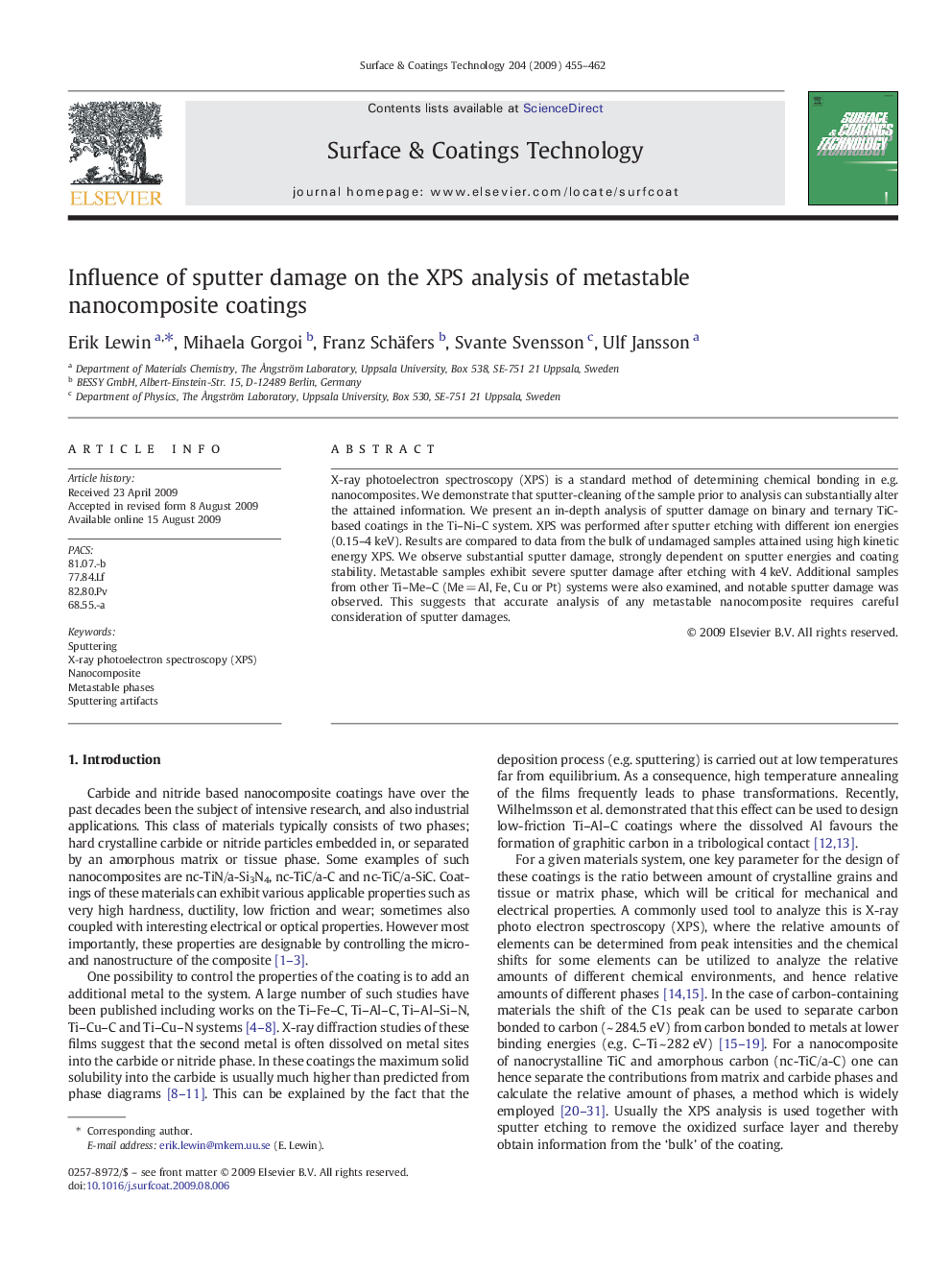| Article ID | Journal | Published Year | Pages | File Type |
|---|---|---|---|---|
| 1660554 | Surface and Coatings Technology | 2009 | 8 Pages |
X-ray photoelectron spectroscopy (XPS) is a standard method of determining chemical bonding in e.g. nanocomposites. We demonstrate that sputter-cleaning of the sample prior to analysis can substantially alter the attained information. We present an in-depth analysis of sputter damage on binary and ternary TiC-based coatings in the Ti–Ni–C system. XPS was performed after sputter etching with different ion energies (0.15–4 keV). Results are compared to data from the bulk of undamaged samples attained using high kinetic energy XPS. We observe substantial sputter damage, strongly dependent on sputter energies and coating stability. Metastable samples exhibit severe sputter damage after etching with 4 keV. Additional samples from other Ti–Me–C (Me = Al, Fe, Cu or Pt) systems were also examined, and notable sputter damage was observed. This suggests that accurate analysis of any metastable nanocomposite requires careful consideration of sputter damages.
